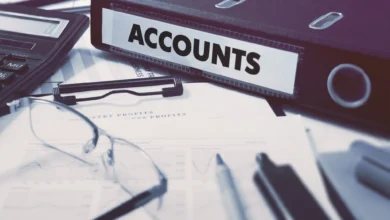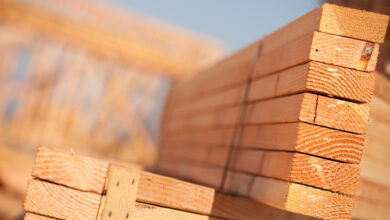So you want to make some whiskey?
In reality, the whiskey distillation process is a little more complicated. Sure, it’s a little easier now than in the 1700s. But, getting all that yeast started on the first try isn’t relatively as easy as doing a quick Google search.
Worried you won’t get it right the first time? Or are you curious as to how the process should go? Read on to find out just how whiskey begins.
From Grains to Mash: Whiskeys Beginnings
Whiskey starts its journey from humble grains, like barley, corn, rye, or wheat. These grains get ground up and mixed with water to create a thick paste called mash. Think of it like a delicious porridge!
The mash gets heated up to release the natural sugars, kind of like cooking a special recipe. This sugary mixture is essential for creating the alcohol in whiskey.
So, from grains to mash, this is where the whiskey adventure begins. It is a simple yet crucial step in the distillation process.
Cook It Up: Fermenting the Mash
Once the mash is ready, it’s time to let nature do its work. We add some special yeast to the mash. It’s an ingredient that turns sugars into alcohol.
It’s like baking bread, but instead of rising dough, we get a bubbly mixture called the fermenting mash. This mash sits in large containers, covered with a cloth, while the yeast does its thing.
It’s like a cozy home for the yeast to party in! Over a few days, the yeast consumes the sugars and produces alcohol and some tasty flavors.
This process is called fermentation. It’s a crucial step in making whiskey flavorful and boozy.
Distilling Magic: The Pot Still Process
Now that we have our fermented mash full of alcohol, it’s time to work some magic and turn it into whiskey. The whiskey distillation process is like a big science experiment that happens in a special pot called a still.
We heat the fermented mash, and the alcohol starts to evaporate. But here’s the cool part – alcohol evaporates at a lower temperature than water, so we can separate them!
The vapor travels through the still, and when it cools down, it turns back into liquid form. This liquid is what we call whiskey. It’s like catching the essence of the mash in a bottle, with all its flavors and character condensed into one amazing spirit.
The Art of Aging: Oak Barrels and Time
After you distill the whiskey, it’s not quite ready to be enjoyed just yet. It needs some time to mature and develop its unique flavors. That’s where oak barrels come into play.
The distilled whiskey is carefully poured into these barrels, and that’s when the magic happens. Over the months or even years, the whiskey interacts with the wood. This draws out rich flavors and colors.
It’s like a slow dance of flavors and aromas as the whiskey absorbs the goodness from the oak. Time plays a crucial role too, as the longer it ages, the more complex and refined the whiskey becomes. It’s like a delicious work of art that gets better with age.
Cheers to Char: The Charcoal Filtration
Before whiskey gets bottled, there’s an important step that adds a special touch to its flavor. It’s called charcoal filtration, and it’s like giving the whiskey a final polish. Here’s how it works:
The whiskey passes through a layer of charcoal, which acts like a filter. The charcoal helps remove any impurities or unwanted flavors, leaving behind a smoother and more enjoyable taste. It’s like giving the whiskey a spa treatment to make it even better.
The charcoal adds a touch of purity to the whiskey, making it clean and crisp. So, raise your glass and toast to the charcoal’s role in creating that delicious sipping experience.
The Sweet Side: Blending and Maturation
Whiskey isn’t all about distilling and aging. There’s a bit of artistry involved too. To create a balanced flavor, you can blend different batches and types of whiskey.
It’s like combining the best ingredients to make a tasty dish. Whiskey makers select different barrels of aged whiskey and mix them to achieve the desired taste profile. They aim to create a harmonious blend that brings out the best characteristics of each whiskey.
This blending process adds depth and complexity. This ensures that every sip is a delightful experience. So, next time you enjoy a glass of whiskey, appreciate the sweet results of the blending and maturation process.
Bottling Brilliance: From Cask to Glass
After the whiskey has matured and blended to perfection, it’s time to bottle it up for your enjoyment. The whiskey is carefully transferred from the aging casks into bottles, ready to get shared and savored.
The bottling process ensures that every drop gets captured and sealed. With this, you can experience the flavors exactly as intended. From the sturdy glass to the elegant labels, each bottle is a work of art.
Tasting Time: Unlocking Flavor Profiles
Now that you have a bottle of whiskey in front of you, it’s time to explore its flavors. Take a moment to savor the aroma as it tickles your nose.
Then, take a small sip and let it coat your tongue. For this, you can use a whiskey sampler.
Notice the different flavors that dance on your palate – perhaps it’s a hint of caramel, a touch of spice, or a subtle smokiness. Whiskey tasting is all about discovering its unique characteristics.
So, go ahead, take your time, and let your taste buds unravel the hidden treasures within each sip. Cheers to unlocking the wonderful world of whiskey flavors!
All About the Whiskey Distillation Process
The whiskey distillation process is a lengthy one. But the result is a smooth-tasting and enjoyable drink.
With so many steps involved, it can be a bit daunting. However, it opens up the door to so many great options when selecting your favorite kind of whiskey. So start exploring the world of whiskey distillation today!
If you found this article informative, please check out some of the other great blogs we have posted.





